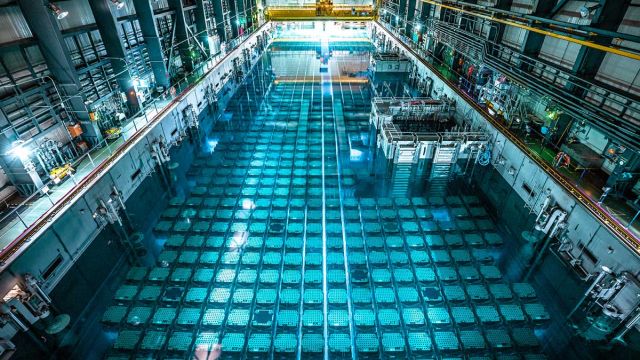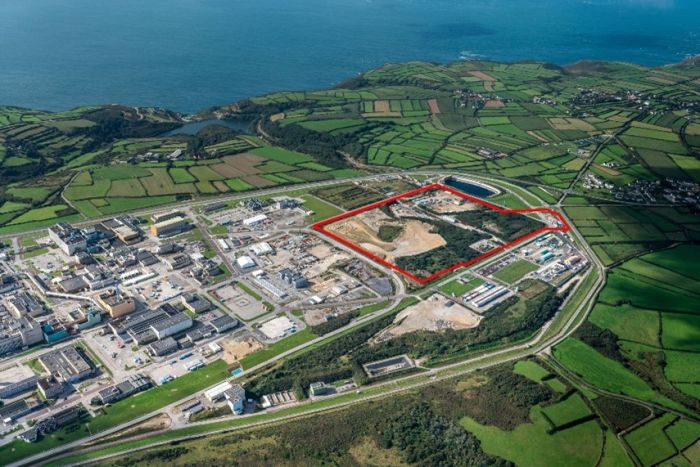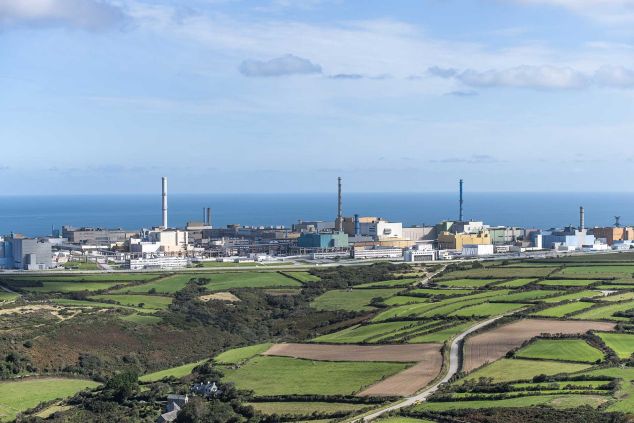
La Hague reprocessing plant: expansion and continued operation until at least 2100
It was actually just a side note: The Conseil de Politique Nucléaire (Nuclear Policy Council), which was founded in 2023 and met at the Elysée Palace last Monday, confirmed the prospect of major investments at La Hague in order to extend the lifespan of the facilities until at least 2100. Corresponding press reports were confirmed by the Elysée Palace on Tuesday: The Council had "confirmed the major guidelines of French policy on the nuclear fuel cycle, which combines reprocessing, reuse of spent fuel and closing the cycle", the La Hague site would "be the subject of major investment". No specific timetables or amounts were mentioned in this context.
The La Hague reprocessing plant
The La Hague reprocessing plant in north-west Normandy has been in operation since 1966 and has been expanded several times. It is the largest plant of its kind in the world and is operated by the majority state-owned Orano Group.
During reprocessing, the reusable uranium and plutonium components are separated from the fission products. The recyclable materials are transported to other sites or stored on site for the production of new fuel elements (uranium or MOX fuel elements).
As part of reprocessing, the fuel elements brought to the plant from nuclear power plants are first placed in so-called decay storage pools, where they continue to release their decay heat. The fuel elements are then broken down in a shredder so that the fuel can be separated from the structural parts.
Multi-stage reprocessing
The fuel is then dissolved with nitric acid so that the recyclable components can be extracted. Only around four per cent of the fuel of a spent fuel element consists of radioactive waste. The remaining 96 per cent can still be used as nuclear fuel. The highly radioactive fission products that remain after reprocessing are vitrified and packaged in special canisters. The structural parts of the fuel elements that have been activated by the neutron radiation during use in a nuclear reactor are also compacted and packed in canisters. They must be disposed of as intermediate-level radioactive waste.
Countries such as France, the UK, the USA and Russia argue that the advantages of reprocessing are that resources are spared, fewer imports are required and the volume of high-level radioactive waste to be disposed of in repositories is lower. Critics argue that reprocessing is also used to produce plutonium for nuclear weapons - which is why reprocessing plants are also subject to safeguards - and that it is not actually economical and may have harmful effects on the environment.
What is known about the current expansion plans
France has now confirmed that it will continue reprocessing into the next century. The state-owned electricity company EdF has been planning to build a decay storage pool next to the existing plant site since 2020. The background is that the storage capacities for spent fuel elements in France are reaching their capacity limits. EdF has already acquired a site for this, initial work is underway, and the work should be completed by 2034.

Another reprocessing plant and a new factory for MOX fuel elements are to be built on the site of the Orano plant. The French Minister of Economy and Finance, Bruno Le Maire, announced on 7 March during a visit to the La Hague site that studies are to be commissioned for this purpose. According to Le Maire, the new reprocessing plant should be ready for operation between 2045 and 2050; he did not give any information on the commissioning of the MOX fuel fabrication plant or the total investment. At a hearing before the French Senate in mid-February, the Managing Director of Orano, Nicolas Maes, estimated the costs for a new reprocessing plant at 20 to 30 billion euros and for a new MOX fuel fabrication plant at 5 to 7 billion euros.
MOX fuel elements are currently used in 22 French reactors and cover an estimated 10 per cent of the company's fuel needs. The use of MOX fuel is also intended for the planned EPR2 reactors.
German waste at La Hague
In Germany, there was a legal obligation for reprocessing until 2005. However, as there were no reprocessing plants in Germany, the spent fuel elements were transported to Sellafield (UK) and La Hague. A large proportion of the resulting radioactive waste is now back in Germany - but not all of it. There is therefore still an obligation to take back radioactive waste from La Hague. In June 2021, the German and French governments signed a new contract to regulate this return. Accordingly, three to five Castor casks with vitrified high-level radioactive waste still have to be brought to the storage facility at the Philippsburg site. The return could be completed this year.
The topic of reprocessing at GRS
The reprocessing of high-level radioactive waste is also the subject of various scientific studies by GRS. For example, scenarios from nuclear supply and waste management facilities are also analysed as part of the accident analysis. A research report published in 2022 also deals with issues relating to nuclear supply and waste management facilities. Although there have been no serious accidents in connection with reprocessing plants for high-level radioactive waste in Western Europe to date, it is still worthwhile for Germany to look into this; the potential environmental impact of an event at La Hague could extend from the North Sea to the German Bight.
